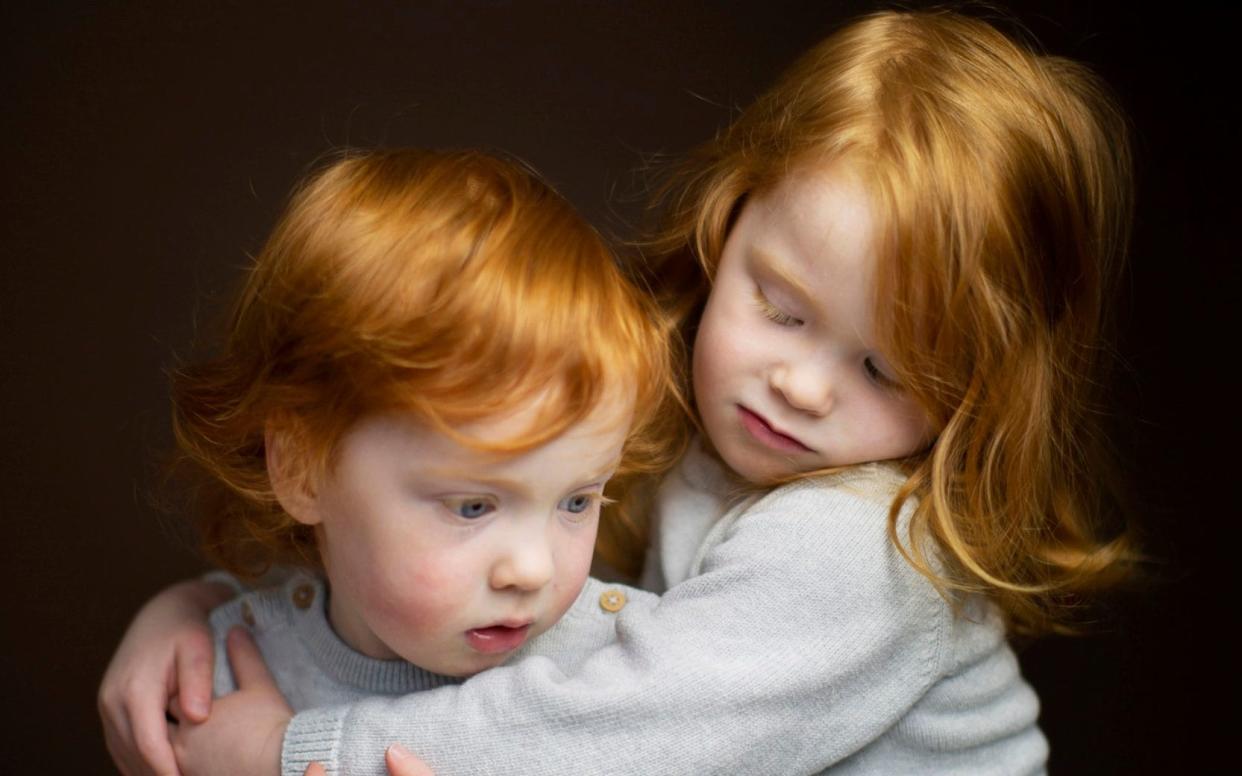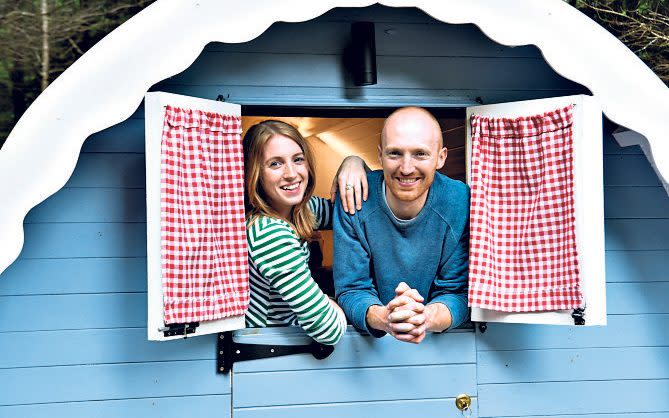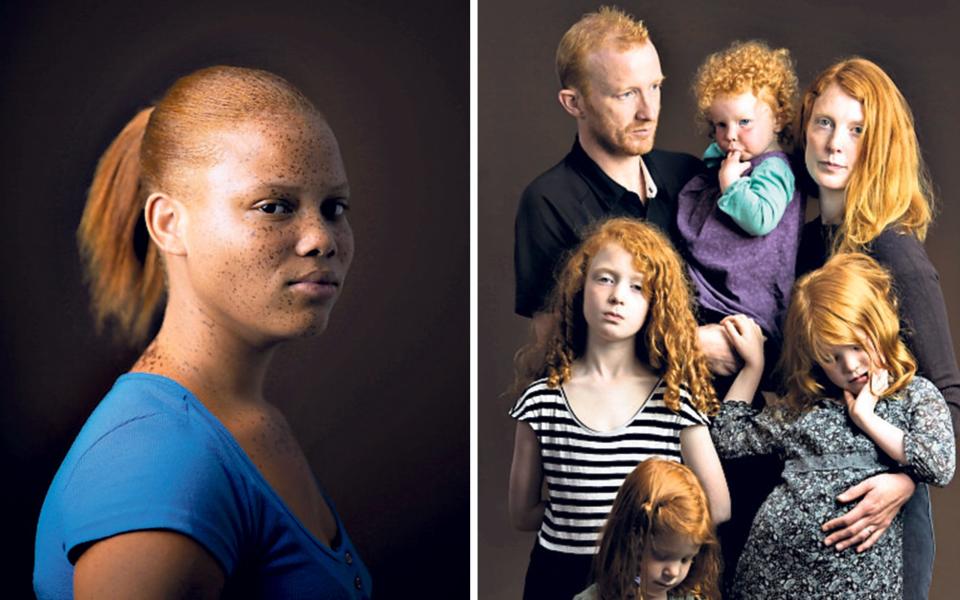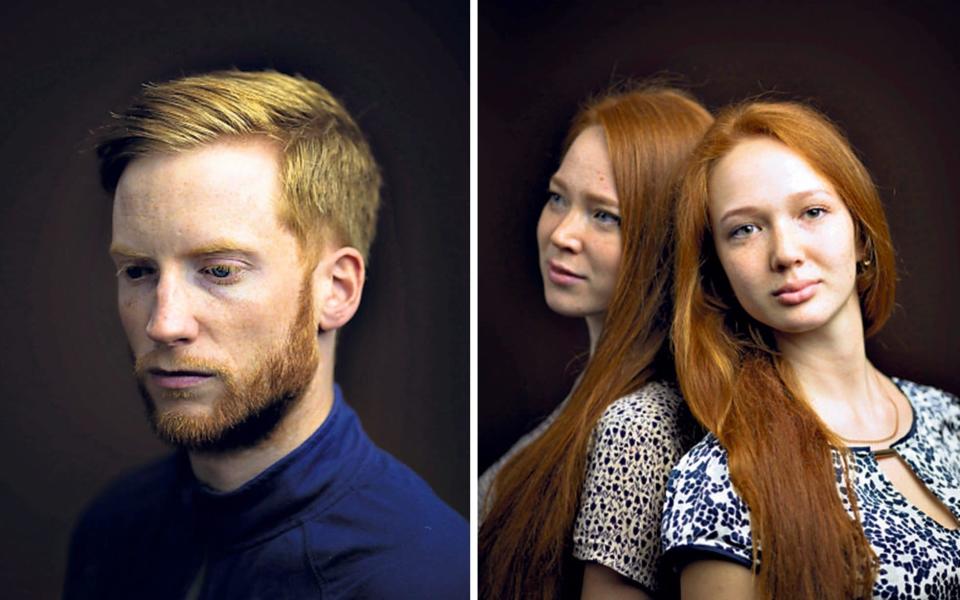'It's not just about hair': Meet the photographer shining light on what it means to be ginger

At a friend’s wedding two years ago, I introduced my boyfriend to a well-known novelist of my acquaintance. “You look like brother and sister!” she exclaimed between canapés. Harry and I, shocked, shifted uncomfortably and said nothing. What was it, apart from the champagne, that had made her put her foot in her mouth so quickly?
Neither of us had to say it; we’re ginger.
Less than two per cent of the world’s population have red hair, making it the rarest hair colour on Earth, and aren’t we made to know it. If you’re on the spectrum from strawberry blonde to copper piping then you’ve probably been on the receiving end of some clumsy name-calling at some point. At the more flattering end, perhaps your father’s been offered 50 camels in exchange for you. It happens.
It’s perhaps one of the last socially accepted forms of prejudice against people for a trait they were born with. And while I’m not comparing it to racism, it would be nice to date someone with a similar hair and skin colour and not have it assumed you’re related.
Contrary to popular belief, we gingers actually a rather large group of people. Nearly 40 per cent of people in the UK are thought to carry the MC1R gene, responsible for ginger hair, which was discovered at Edinburgh University in 1997.
We’ve been around a long time; upwards of 50,000 plus years. And contrary to reports that we’re set to “die out”, red hair may be recessive but the will to express it is strong.
It’s a story that photographer Kieran Dodds set out to tell with his photography project, Gingers.
We’re chatting on the phone about the results of that seven-year project, a beautiful mustard-coloured cloth-bound, hardback. Although, inevitably, we’ve been comparing war wounds.
Despite growing up in Scotland where numbers are reckoned to be as high as 13 per cent, Dodds always felt that being ginger was considered unusual. The photographer had his share of carrot-top slurs growing up. “I’d be like, ‘Carrot tops are green’,” chuckles the 39-year-old. He too at one point was nervous of dating a ginge.

Now, though, he’s the proud father of four-year-old ginger twins, Ada and Izzy. His wife Caroline is on the spectrum. “People are more fixated on outward appearance than ever before, and that was something I was trying to address,” he says.
His inspiration for the project was two-fold. First was a visit to the National Gallery of Scotland where he learned there had been a time, during the renaissance, when golden hair had been celebrated as a thing of beauty, the hair colour of gods and the divine.
The second was the Scottish Independence referendum, which got him thinking about the clichéd image of Scottish identity (“And I am that cliché”). He wondered where else hair like his appeared.
The result was a series of portrait sittings, not only in the hotspot of the Celtic fringes of Scotland and Ireland. Dodds visited 11 time zones, from the Americas through Europe, on to the Middle East and Asia. Auburn locks occur everywhere from the Berbers of Morocco to Pakistan and Afghanistan, and as far as Western China. It’s changed how he sees the world.
“It’s not about hair,” says Dodds. “It’s about connecting people across the world using a common trait rooted in our DNA. Something that appears superficial, simple and appealing can draw us in and show us we are made of the same stuff. With ginger hair, you can see that. Across time, it shows human migration across the world. ”

It’s an inspiring idea, using gingers to show how interconnected we all are as human beings. Although, it only amplifies how sad it is that so many young ginger people are made to feel like the “other” because of it.
Dodds always asked the children he photographs if people comment on their hair. “A lot won’t say but their parents will come out with it and say they are picked on at school,” he says. “It’s still a problem today. Kids find a difference and use it against them.”
It was a similar story in Russia, where he met redheads who had been bullied for being witches with special powers.
The only place where Dodds found gingers who hadn’t been made to feel bad about their hair colour was Jamaica. The Caribbean island nation’s motto is “Out of Many, One People”. “There’s so much diversity and difference, it’s just part of the fabric of society. That really surprised me. I asked everyone the same questions and pushed them on it, but none of them had been bullied.”
It’s something of a relief to hear to be honest, because, as Dodds and I agree, the colour of our hair is more of an issue for other people than for us.
“Doing the project I feel like people think it’s a larger part of my identity than it actually is,” agrees Dodds. “It is obviously part of my physical being, but it’s not the core value of who I am.”
And yet, his images are unabashed in their celebration of aurelian beauty. The McKay family from Perth, Steven and Rebecca and their four daughters, are a golden joy to behold, and must turn heads and occasion comment wherever they go.

“They must get it all the time, and they can’t hide it, they’ve got four kids! They’re this amazing, flowing gold mass,” exclaims Dodds.
There may be a number of famous gingers today, from Damian Lewis to Karen Gillan, but the adults and children Dodds has photographed are decidedly not models. “It’s about showing there’s a beauty and dignity in everyday people,” he says. “I want people to see the individual and then see them as part of a bigger collection.”
The book is dedicated to his daughters, who he says are at a precious age and beginning to become more and more aware of their hair colour.
“You want them to be loved and known to be loved for who they are, not just what they look like,” says Dodds. “Hopefully they’ll grow up and into their hair and see they’re beautiful in their DNA, not just on the outside.”
'Gingers' is available to pre-order now at book.kierandodds.com; instagram.com/kierandodds

 Yahoo News
Yahoo News 
